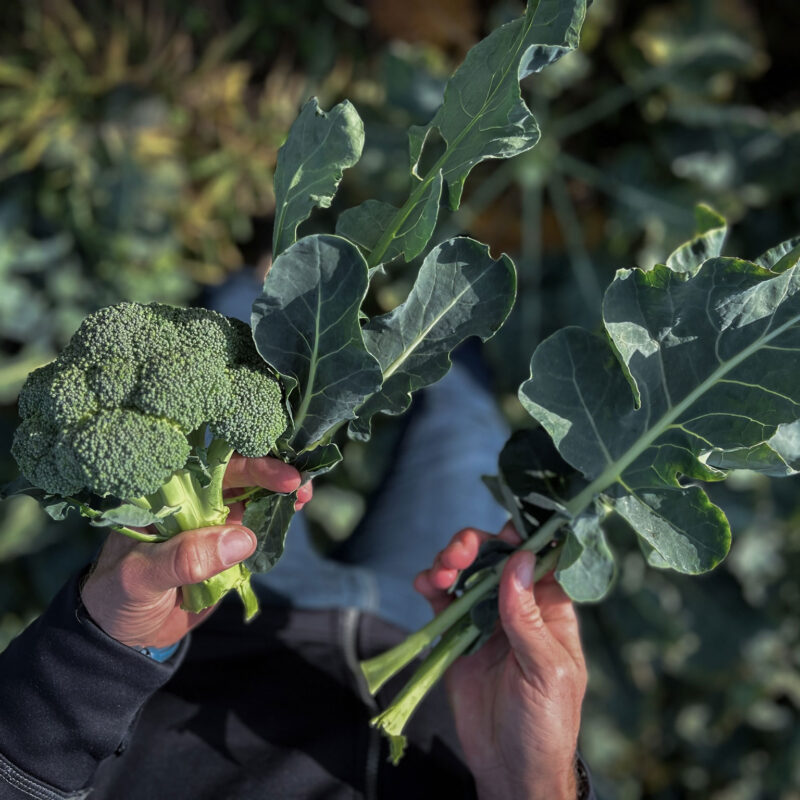Nudging Consumer Behavior in Food E-com
Today, food accounts for approximately 25% of our individual climate footprint. At the same time, studies show that through increased knowledge, consumers can half their food related climate impact. So, how can we encourage more sustainable behavior among consumers? In a pilot project in 2019, Axfoundation supported online food retailer Mat.se’s use of the economic nudge theory to guide customers towards climate-smart choices through a climate labelling at product level.

Rice or potatoes? Axfoundation supported Mat.se to help "nudge" its customers towards climate-smart choices.
The Issue
Food generates the most greenhouse emissions from household consumption, followed by transport and housing. However, consumers often lack knowledge regarding how the food they buy influence the climate and the environment. While data on emissions often is available on an aggregated level – for example beef has a higher climate impact than beans – it is often missing on a product level – e.g. is there a difference between Swedish beef and beef imported from South America? In addition, consumers make their purchasing decisions within just a few seconds, leaving little room to consider different sustainability parameters. To enable consumers to make their daily food choices climate-smart, the information must be readily available and easy to understand. In the end of the day – consumers want to lower their impact – the issue is the having the knowledge how to.
Our Solution
Mat.se saw these challenges as an opportunity to encourage climate smart behavior by becoming the first online grocery store to provide its customers with a climate receipt with climate impact detailed down to product level. By providing the consumer with this information Mat.se guides the consumer to make climate-smart food choices. The climate receipt also enables the customer to follow changes in the climate impact of their purchases, gathering information over time on what creates large or small climate impact.
“By adding climate data to commodities at Mat.se, the products’ environmental impact can be visualized. In this way, consumers increase their understanding of the climate impact of certain purchases- creating an opportunity to encourage the buying of climate-smart alternatives.” – Hanna Skoog, Program Director Axfoundation
Our Work
In order to provide this service, Mat.se needed support in developing and quality checking the climate data of their product range at product level. Axfoundation and Axel Johnson AB arranged a collaboration with RISE (Research Institutes of Sweden) who gave Mat.se access to their climate database for food. RISE also calculated the climate impact for each product in Mat.se’s product range. Axfoundation and Axel Johnson AB, remained active in this collaboration by contributing to the development and continuation of the project.
“For Axfoundation, the long-term goal of this project is to stimulate sustainable behavior by contributing to building reliable and easily communicable climate data that can be used by consumers. We hope that, initially, the climate data is shared among the companies within the Axel Johnson Group and then integrated into RISE’s climate database to reach as many actors as possible.” – Hanna Skoog, Program Director, Axfoundation
Results
In 2019, Mat.se launched the largest climate labeling of food items ever done, comprising approximately 3,000 products that are purchased frequently and in large quantities. A unique climate database used to produce the climate data had been developed in collaboration with the research institute RISE, Axfoundation and Axel Johnson. The food items were matched with the climate data, calculated by researchers at Research Institutes of Sweden (RISE), showing the CO2e per kilogram of product.
Climate-impact information on products works according to the same principle as the comparative price per kilogram. The CO2e per kilogram figure illustrates what one kilogram of the selected food corresponds to in carbon dioxide equivalents, i.e. emissions of greenhouse gases. Clear climate-impact marking on product level, combined with innovative nudging solutions made it easier for consumers to compare the impact of different food items. Through nudging, rather than coercion, consumer behavior moved gradually towards more sustainable habits.
Nudging tests clearly indicate that customers are interested in and willing to adapt their purchases based on the food’s climate footprint. In total, the climate impact of food purchases reduced an average of 7% (based on average CO2e per order) among the consumers who participated in the test.

























































